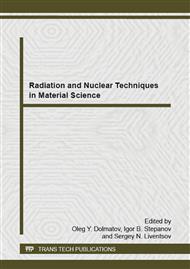p.689
p.694
p.698
p.702
p.708
p.713
p.717
p.722
p.728
Control Model of SH-Synthesis for Two-Component Systems
Abstract:
The article describes the development of a model for controlling self-propagating high-temperature synthesis. The model is based on computation and theoretical analysis of temperature field dynamics for a propagating combustion wave. The work proves the applicability of this model for the synthesis of boron-containing materials implemented at nuclear power plants. The discrepancy of the model amounts to 20 - 25%, and the satisfactory agreement between the calculation and experimental data testifies the validity of the numerical method and allows calculating any two-component SHS systems.
Info:
Periodical:
Pages:
728-732
Citation:
Online since:
January 2015
Price:
Сopyright:
© 2015 Trans Tech Publications Ltd. All Rights Reserved
Share:
Citation:


